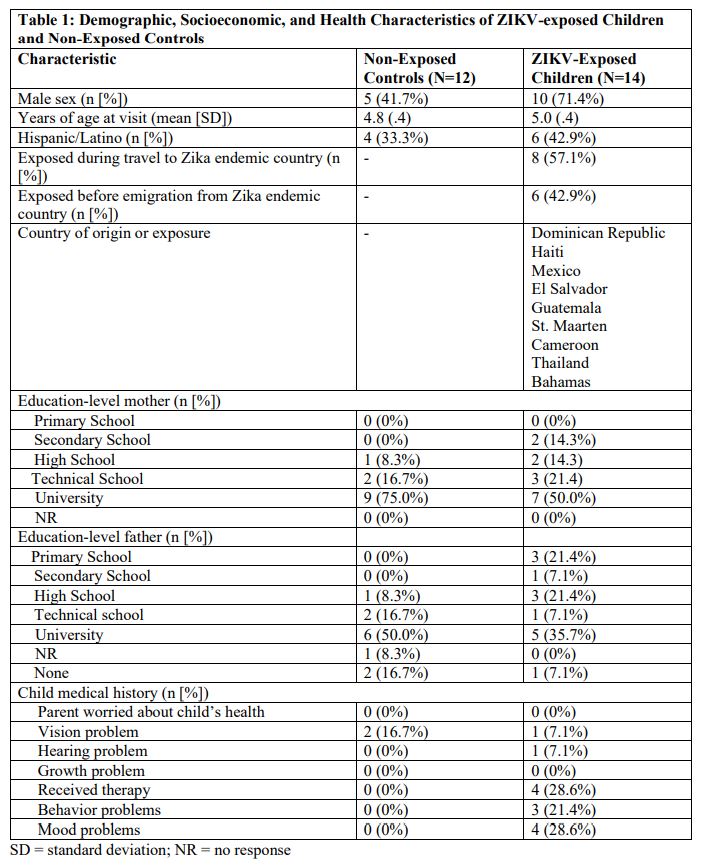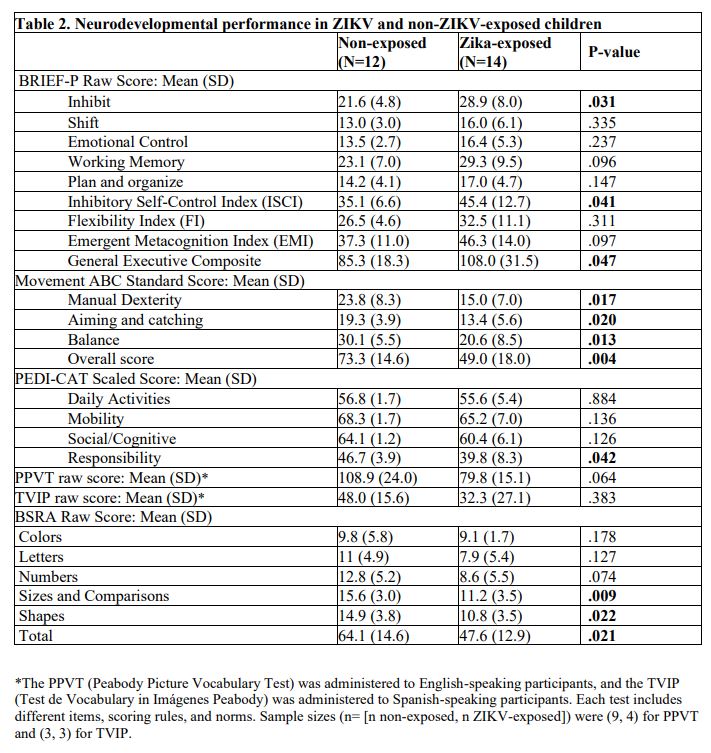Neonatal Follow-up
NICU Follow Up and Neurodevelopment 3: Impact of the Prenatal Environment on Development and Outcomes
234 - United States neurodevelopmental outcomes of Zika-virus exposed preschoolers
Publication Number: 234.143
- SM
Sarah B. Mulkey, MD, PhD (she/her/hers)
Fetal-Neonatal Neurologist, Associate Professor Neurology and Pediatrics
Children's National Health System
Washington, District of Columbia, United States
Presenting Author(s)
Background: Children with in utero Zika virus (ZIKV) exposure without congenital Zika syndrome (CZS) may be at risk for delayed neurodevelopment to age 18 months (Mulkey et al, 2019). Preschool-age outcomes for children with in utero ZIKV-exposure have not been reported within the United States.
Objective: Assess the difference in neurodevelopmental performance of ZIKV-exposed children and non-exposed controls at ages 4-5 in a U.S. cohort.
Design/Methods:
We performed a prospective cohort study of ZIKV-exposed children and unexposed controls at Children’s National Hospital, Washington DC. 14 ZIKV-exposed cases were eligible (did not have CZS and seen at CNH for clinical evaluation pre/post birth due to antenatal ZIKV exposure by travel or emigration) and were evaluated between ages 4 and 5 years. 12 control children had no antenatal ZIKV-exposure were enrolled and evaluated at the same age. Child development was assessed by parent questionnaires (Pediatric Evaluation of Disability Inventory [PEDI-CAT], Behavior Rating Inventory of Executive Function [BRIEF-P]), and child evaluations, Bracken School Readiness Assessment (BRSA), Movement Assessment Battery for Children (MABC), and Peabody Picture Vocabulary Test (PPVT, or TVIP in Spanish). Parents answered questions on child medical history and family demographics. Raw and standard scores were compared between cohorts.
Results:
Cases were evaluated at mean (SD) age 5.0(.4) years (Table 1); Controls were evaluated at 4.8(.4) years. Controls had higher parent education (92% mothers and 80% fathers with college/university) than cases (71% and 38%, respectively). Cases had higher raw scores on BRIEF-P categories of inhibit, inhibitory self-control index, and general executive composite (all p< .05), reflecting higher executive dysfunction (Table 2). Controls scored significantly higher than cases on all MABC domains (dexterity, aiming and catching, balance, total), as well as BSRA sizes/comparisons, shapes, and total. PEDI-CAT scores were lower for cases than controls in responsibility (p =.042). More case parents report behavior and mood problems (21% and 29%, respectively) than control parents (0% both). Three children in the case cohort have either a diagnosis of autism spectrum disorder or global developmental delay (21%); only one of them had scores for child activities.
Conclusion(s): Children with in utero ZIKV exposure may present risks to neurodevelopment in childhood including coordination, executive function, developmental delay, and behavior. There is a need for continued follow-up at school-age for children with prenatal Zika exposure even without CZS.

